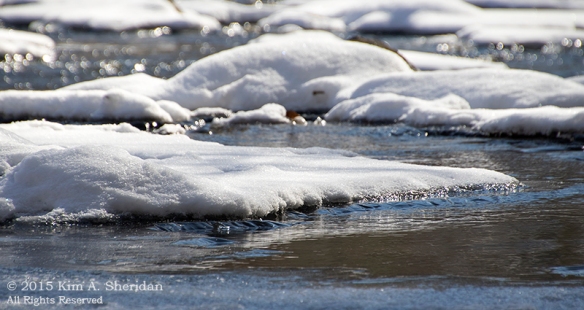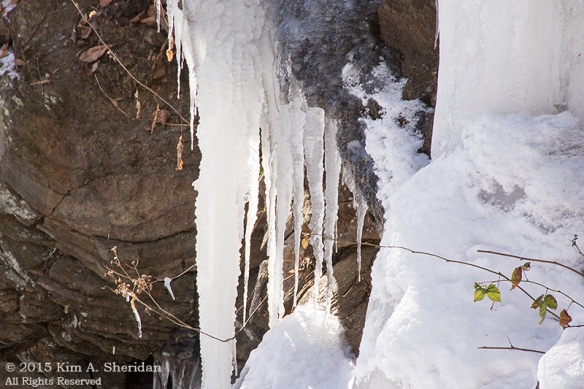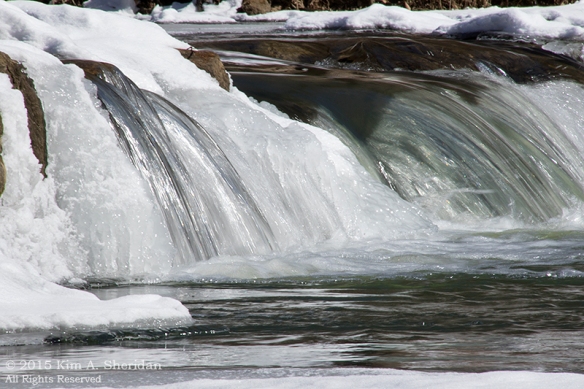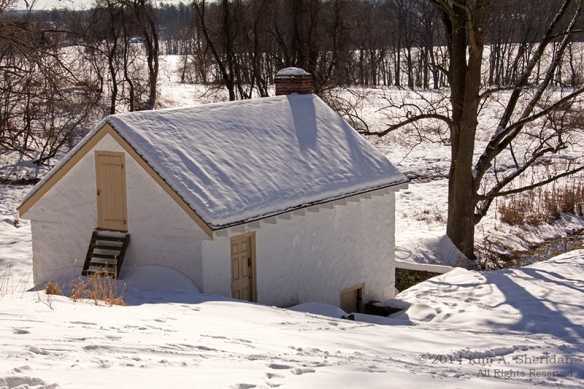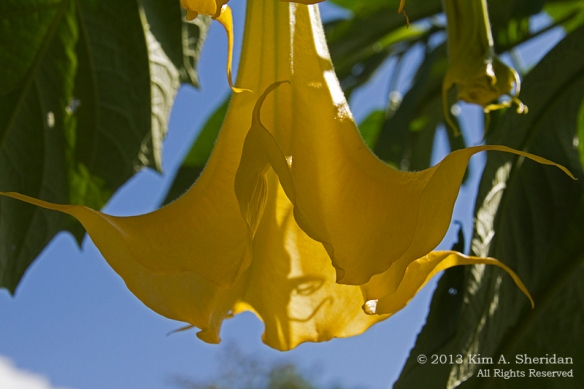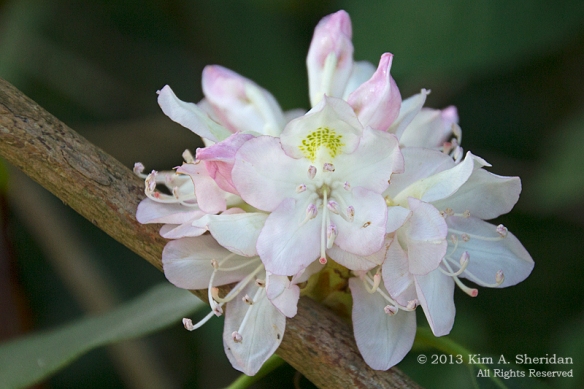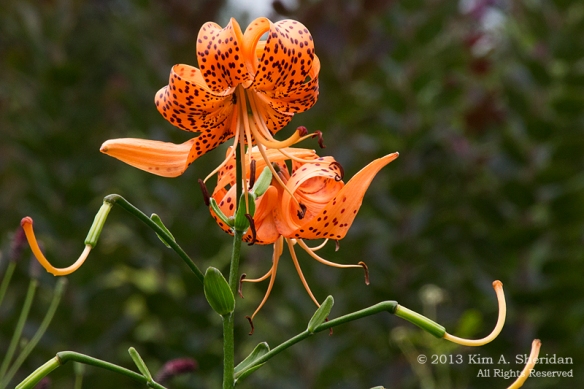or
What I Did On The Fourth of July
 This year ranked as one of my more unusual Independence Day holidays. Several Refuge friends and I went exploring in Fairmount Park and then the Morris Arboretum.
This year ranked as one of my more unusual Independence Day holidays. Several Refuge friends and I went exploring in Fairmount Park and then the Morris Arboretum.
Fairmount Park in Philadelphia is the one of the largest urban park systems in the US, and spreads throughout much of the city. The 1800 acre portion along the Wissahickon Creek, known as the Wissahickon Valley, is actually a gorge, with the wooded slopes rising nearly 200 feet above the Creek. It’s as close to wilderness as one could be in a big city.
Our primary goal here was to see the Thomas Mill Road Covered Bridge. To reach it we took a long, easy walk down Forbidden Drive.
 Kids swimming in the Creek. It was hot and humid, and later in the day I really wanted to join them.
Kids swimming in the Creek. It was hot and humid, and later in the day I really wanted to join them.
 One of the remnant dams along the Creek. The dams supplied water to run the waterwheels of the lumber, paper, and grist mills that once populated the Valley.
One of the remnant dams along the Creek. The dams supplied water to run the waterwheels of the lumber, paper, and grist mills that once populated the Valley.
 “Oh look – lunch!”
“Oh look – lunch!”
 Trail art, by humans.
Trail art, by humans.
 I spent some time trying to persuade at least one Eastern Tiger Swallowtail butterfly to be still long enough for a picture. Didn’t have much luck.
I spent some time trying to persuade at least one Eastern Tiger Swallowtail butterfly to be still long enough for a picture. Didn’t have much luck.
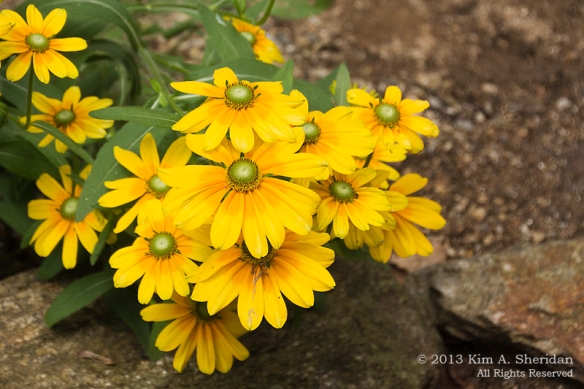 More trail art. Courtesy of Mother Nature this time.
More trail art. Courtesy of Mother Nature this time.
When you walk anywhere with the botanically-inclined, you can expect frequent discussions on the identity of this or that plant. Here’s Robb (in orange) and Jeff arguing, ahem, discussing the identification of a tree.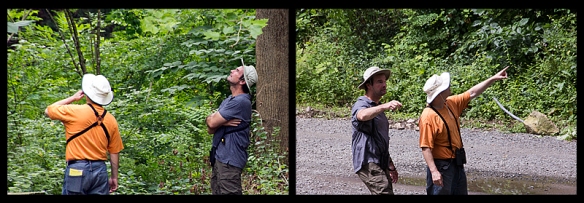 “This tree over here?” “No! THAT tree over THERE!”
“This tree over here?” “No! THAT tree over THERE!”
 Really cool old building, originally part of a nearby mill, but rebuilt by the Works Projects Administration (WPA) in 1938. They were used to shelter the Fairmount Park Guards who once patrolled the park.
Really cool old building, originally part of a nearby mill, but rebuilt by the Works Projects Administration (WPA) in 1938. They were used to shelter the Fairmount Park Guards who once patrolled the park.

 Ahhh! At last! The Thomas Mill Road Covered Bridge.
Ahhh! At last! The Thomas Mill Road Covered Bridge.
It was built in 1737, and restored by WPA in 1938. It’s the last covered bridge in the Valley, and the only covered bridge in a major U.S. city.
There’s something picturesque about a covered bridge. I think it’s the play of red against the green foliage.
Aren’t all covered bridges red?
Here’s Don, looking every bit the bold explorer, in front of the bridge.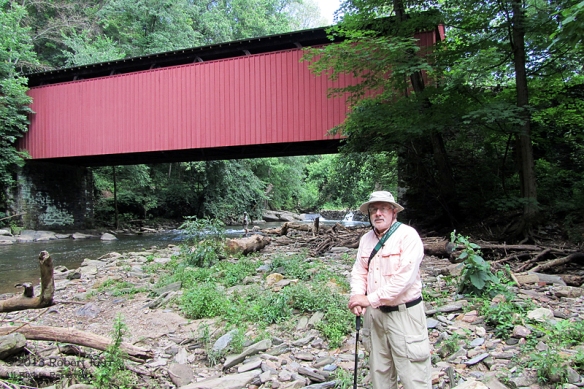
We crossed over the Creek here, and came back to Valley Green via the trail. A totally different walk. Where the Forbidden Drive was wide, the trail was narrow; where it was flat, the trail climbed sharply up and down; where the Drive was crowded with bikers and runners and horses, the trail was – well, not empty, but certainly less crowded.
Our goal along the trail side of the Wissahickon was “The Indian”. The Valley was once the home of the Lenni-Lenape people. In 1902, after they were long gone, a 15 foot high sculpture was erected in their honor. It depicts a Lenni-Lenape warrior, kneeling and shading his brow as he watches his tribe depart from the region. Of course, the artist couldn’t be bothered to differentiate among the traditions of the various Native American nations that lived here. Which is why an Eastern Woodland Indian is wearing a Western Plains Indian headdress.
On the Forbidden Drive side we’d come upon a sign marking the Indian statue, placed high up on the far bank of the creek. The only trouble was, we couldn’t see the statue for the trees.
With the help of some other trekkers, we found the pathway to the Indian.This was a short but tough trail that went straight up; you get some idea of the steepness of the Gorge from this set of stairs. We found ourselves below the base of the statue. This was a great view, and I wanted a great shot, but as you can see but I blew the focus. Oh, well, I will just have to go back.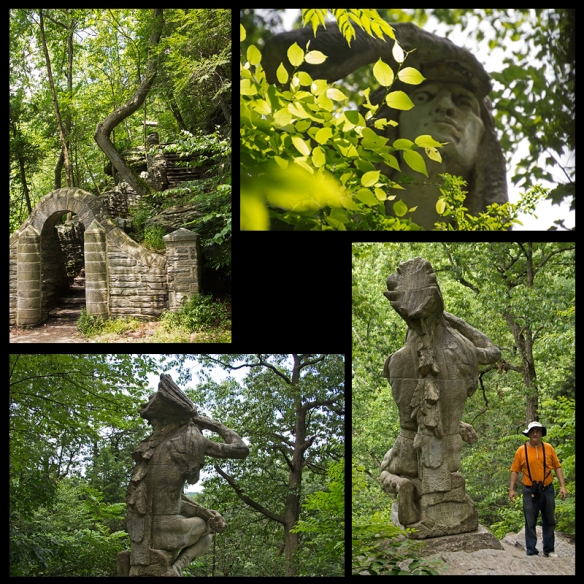 Up at the top we got a perspective I am quite familiar with from my wildlife photography – the rear end. Here you can see that the statue is slightly more than two Robbs high. And since the Indian’s kneeling – well, that’s one big Indian.
Up at the top we got a perspective I am quite familiar with from my wildlife photography – the rear end. Here you can see that the statue is slightly more than two Robbs high. And since the Indian’s kneeling – well, that’s one big Indian.
Leaving our friend, we discovered a much easier path back down to where the main trail awaited. Wish we’d known that before! From here back to the car, the trail got tougher, as we needed to clamber over roots, tree trunks, rocks and even small streams. A couple of times I found it easier to slide on my bum. Eventually we made it back to Valley Green, where another adventure awaited – finding a restaurant that was open on the Fourth of July.
 My dad grew up very close to the Wissahickon Valley in the 1930s and ’40s, and spent a lot of time there. And told me a lot of tall tales from his boyhood. This first visit just made me more determined to see more of the area he knew so well.
My dad grew up very close to the Wissahickon Valley in the 1930s and ’40s, and spent a lot of time there. And told me a lot of tall tales from his boyhood. This first visit just made me more determined to see more of the area he knew so well.
Coming up: Independence Day II: A Morris Mosaic
Photo of Don courtesy of Robb Kerr
Historical information courtesy of the Friends of the Wissahickon http://www.fow.org/about-park
 It’s a marshmallow world in the winter
It’s a marshmallow world in the winter When the snow comes to cover the ground
When the snow comes to cover the ground I wait for it the whole year round.
I wait for it the whole year round. Since we began exploring the Wissahickon Valley earlier this year, I knew it would be a wondrous place in the snow. So I’ve been waiting.
Since we began exploring the Wissahickon Valley earlier this year, I knew it would be a wondrous place in the snow. So I’ve been waiting. *SIGH* There goes Don, straight onto the ice in the middle of the stream, without a thought for his own safety. He’s old enough to know better.
*SIGH* There goes Don, straight onto the ice in the middle of the stream, without a thought for his own safety. He’s old enough to know better. I’m old enough to know better… than to go first. I let Don test the ice, clamber down the steep and slippery stream banks. If he survived, then I followed. Do you think I’m going to let him get all the good shots? Wissahickon Creek, down on the ice.
I’m old enough to know better… than to go first. I let Don test the ice, clamber down the steep and slippery stream banks. If he survived, then I followed. Do you think I’m going to let him get all the good shots? Wissahickon Creek, down on the ice.

